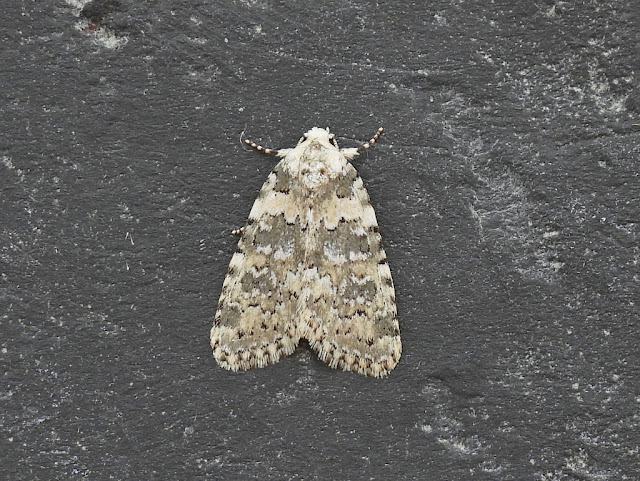As a young boy I inherited a small collection of birds' eggs which my maternal grandfather and uncle had put together in the first half of the 20th century. And, like a number of kids did in my day, I added a few more. One of my father's brothers was a keen lepidopterist, with a sizeable collection of mounted butterflies and moths kept in glass-topped wooden display cases reeking of camphor. By the early 1970s he no longer collected, but his impressive hoard nevertheless inspired me to try it myself, and I recall pitiful attempts at pinning out sorry specimens on a home-made setting board.
None of those boyhood efforts at collecting made it past adolescence I am glad to say, but the urge to collect certainly did. When I started birding as a young man, that urge manifested itself once again in an unexpected way: listing. In the introductory pages of my 1976 copy of Peterson's A Field Guide to the Birds of Britain and Europe is a 'European Check-List', with a little space for a tick next to each species. Personally I preferred a cross, and in many cases my 'X' is accompanied by a date. In the very early 1980s my list passed 200, and I vaguely recall being conscious that 300 was approaching fast. However, I have no idea what my 300th bird was, nor any record of of my journey to that landmark or beyond it. Why not? Because I am very bad at collecting.
I did briefly check out Wikipedia's blurb on the psychology of collecting, but only skimmed it. I am aware that the collecting urge exists in many of us, that there is a scale from 'casual' to 'obsessed' and from 'innocent' to 'destructive', but beyond that I'm not curious enough to probe. All I know is that I am something of a failure at it. To illustrate...
A simple assignment: in one year, collect as many bird species as possible within a defined geographical area. And so I signed up to the 2023 Patchwork Challenge. The first winter period and spring went pretty well, with moderate levels of effort and enthusiasm building a decent collection. And yet here we are on the threshold of meteorological autumn - a birdy time of plenty - and I have totally lost interest. I have not updated my collection in three months, and could hardly care less. It's not that I haven't added to it (Cattle Egret, Wood Sandpiper, Spoonbill, Garganey and, today, Ruff spring to mind) but other factors are at play. For example, since coming off Twitter I no longer see Patchwork Challenge notifications and consequently feel a bit distanced from it all. Also, the nice hedgerows but largely sterile fields of my designated 'patches' have got me hankering after what is probably my favourite local spot, Cogden, where the fields are lush with wildflowers and insects. So much so, in fact, that I can see a fair bit of autumn being spent there...

|
|
A Cogden Redstart in typically unconfiding mode last Saturday. |

|
|
Cogden Beach Wheatear. Such pics were once ubiquitous on this
blog. |

|
|
And my first Whinchat of 2023! |
It was so good finally to see a Whinchat this year. Still no 2023 flycatchers of any kind though. Woeful.
In addition to the Blackneck featured in the last post, at Cogden I photographed another moth that is unlikely to feature in my garden collection...

|
|
Shaded Broad-bar |
In summary then, yes, I am very bad at collecting. I lack the whatever-it-is that a collector needs in order to grow his collection. Dedication? Single-minded purpose? I can dabble at collecting for brief periods, but it always ends up seeming a bit pointless. Even the garden moth list, which is coming along nicely right now and has undoubtedly held my attention for longer than most such endeavours, will eventually need to become a lot more than just a collection if it is to keep me interested.
Having said all that, why did I bother twitching a couple of Ruff that Pete Forrest found today on the edge of my West Bay & Eype patch? A genuine question that, which in the light of the above I have explored at some length. It wasn't because I was anxious for the Patchwork Challenge points. It wasn't because Ruff are stunning creatures which one must always at all costs see. It wasn't even because of their novelty value on a patch with no proper wetland habitat...
In the end I reached the conclusion that I went because I was in the mood and fancied it. Which is a pretty lame reason, and explains why I will always be very bad at collecting.

|
|
Two scaly juvenile Ruff on a wet West Bay field. Nicely
collected. |





















































